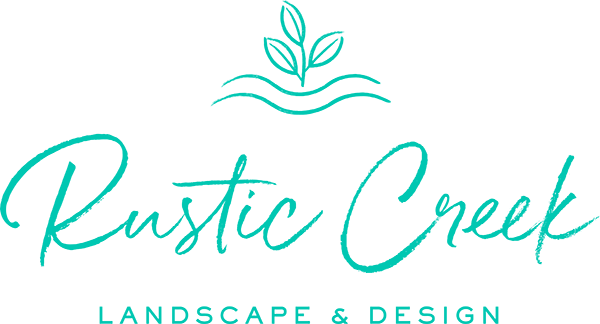These days, sustainability is more than just a buzzword; it’s a way of life. As such, many homeowners are rethinking how they approach their outdoor spaces. Traditional landscaping often centers on aesthetics: lush lawns, neatly trimmed hedges, and ornamental flowers. But what if your yard could be more than just beautiful? What if it could also be sustainable?
Enter regenerative landscaping. This is a forward-thinking approach toward landscaping that blends beauty, ecology, and functionality to create an outdoor space that is more sustainability focused. But what exactly does it mean, what does it entail, and how can you tell if it’s the right fit for your property and lifestyle?
Understanding Regenerative Landscaping
In truth, regenerative landscaping is a holistic approach to land management that actually goes beyond sustainability. While sustainable practices simply aim to minimize harm to the larger environment, regenerative practices seek to restore, replenish, and enhance the natural systems on a given piece of land.
This means that these designs are not just intended to be attractive and functional. They’re also meant to do things like:
- Improve soil health
- Boost biodiversity
- Capture carbon
- Retain water
- Support pollinators
Regenerative landscaping works to create living systems that thrive without depleting natural resources. Think of it as landscaping with nature, not against or in spite of it.
Key Principles of Regenerative Landscaping
Here are some foundational ideas and elements used in creating regenerative landscapes:
- Soil Building: Healthy soil is at the heart of any regenerative system. People creating regenerative landscapes typically avoid synthetic fertilizers and instead use compost, mulch, cover crops, and microbial amendments to enrich the soil. The idea behind this is that healthy soil stores more carbon and water, ultimately supporting a thriving ecosystem below the surface.
- Native and Climate-Adapted Plants: Regenerative landscapes prioritize plants that are native to the region, or at least well-adapted to the local climate. These plants typically require less watering, need no synthetic chemicals, and support native wildlife (like birds, bees, and butterflies).
- Water Management: Rather than sending rainwater into storm drains, regenerative landscaping uses rain gardens, swales, and permeable surfaces to get water into the ground. This reduces runoff and leads to much more sustainable water management.
- Biodiversity: A regenerative yard is buzzing with life—literally! Pollinators, beneficial insects, microbes, fungi, birds, and even small mammals are welcome in regenerative landscaping. Diverse plants and layered habitats encourage a healthy and balanced ecosystem that can largely maintain itself.
- Minimal Chemical Inputs: Rather than relying on herbicides, pesticides, or synthetic fertilizers, regenerative landscapers use organic or biological alternatives, promoting a chemical-free environment that’s safer for pets, kids, and local wildlife.
- Waste as a Resource: Yard waste? Kitchen scraps? Pruned branches? In regenerative landscaping, these things aren’t seen as trash but as ingredients for compost or mulch. These “closed-loop” systems help reduce your environmental footprint.
Is Regenerative Landscaping Right for You?
Healing the earth from your backyard may be compelling, but the actual practice won’t be for everyone. It’s important to consider whether regenerative landscaping aligns with your goals, resources, and property.
Ask yourself these questions to help you decide.
- Is having a low-maintenance yard important to you?
A regenerative landscape may take time to establish, but once mature, it typically requires less mowing, watering, and fertilizing than a conventional yard. - Are you open to a more natural aesthetic (rather than a polished one)?
Regenerative landscapes often have a “wilder” look compared to neatly edged lawns. If you value a naturalistic style, this could be a great fit. - Do you want to support pollinators and wildlife?
If you enjoy seeing butterflies, hummingbirds, and bees flit through your garden, regenerative design will give you that opportunity. On the other hand, if you’d rather keep wildlife off your doorstep, this might not be the best option for you. - Are you willing to face a learning curve?
You don’t need to be a master gardener to go regenerative, but there’s a good chance you will need some guidance. Many people start small (perhaps with a native pollinator bed or replacing a section of lawn) and grow from there. Consulting a regenerative landscaper or taking a local class can provide valuable direction. - Is reducing water use important to you?
Regenerative landscaping can reduce water use, making it a great option for drought-prone climates, or for people who are looking to use less water.
Getting Started
You don’t need to overhaul your entire yard to start regenerating. Here are a few beginner-friendly steps that will start you down the right path:
- Replace part of your lawn with native groundcovers or a rain garden.
- Start composting at home to feed your soil.
- Choose at least three native plants to add to your garden this season.
- Mulch your soil with natural materials like wood chips or straw.
- Eliminate synthetic fertilizers and pesticides.
Even modest changes like these can create ripple effects, setting your landscape up to be more regenerative and eco-friendly for years to come.
A commitment to regenerative landscaping is a commitment to building a cooperative relationship with the land around you. It’s not about gardening or creating purely beautiful spaces; it’s about living harmoniously with nature, contributing to climate resilience, and creating vibrant, life-filled spaces.
No matter what type of yard you’re working with, regenerative landscaping invites you to reimagine what your outdoor space can do—for you, for your community, and for the planet. So if it sounds like a good fit, get creative, start planning, and take that first step!

